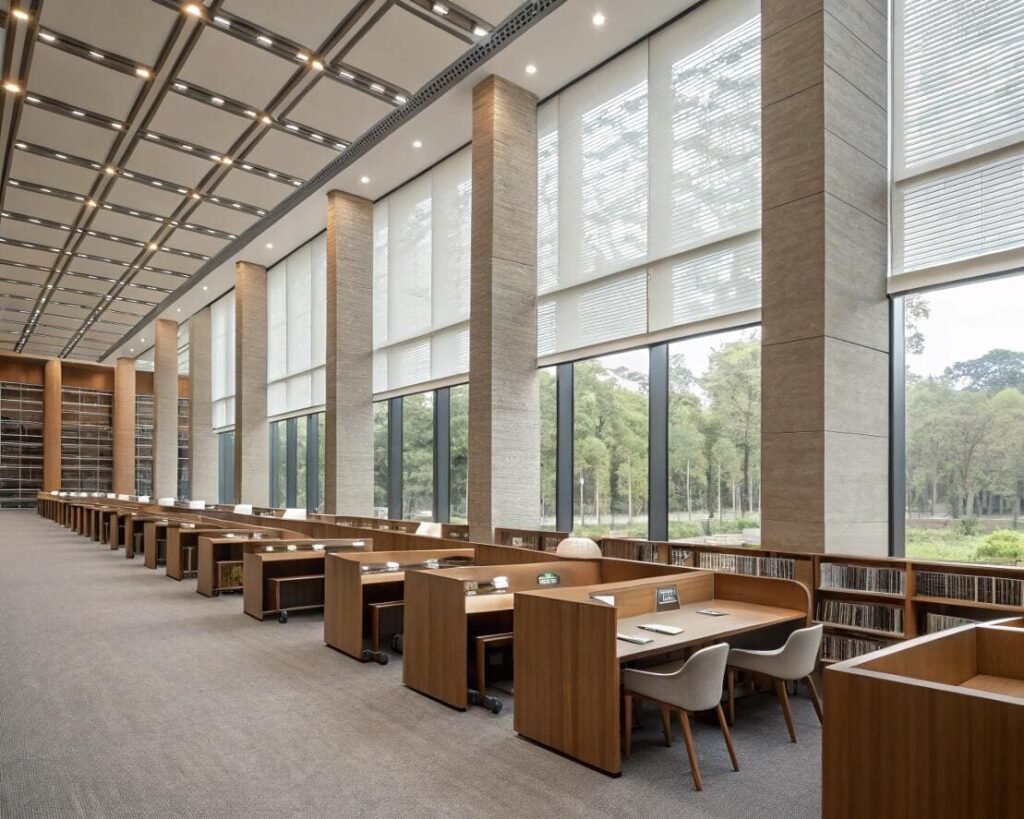Managing dozens or even hundreds of window blinds in a large commercial building is a logistical nightmare. Individual controls lead to chaos, inconsistent facades, and wasted time. Let's solve this control problem.
To sync motorized blinds, you group them into zones using a central controller like a multi-channel remote, a smart hub, or a Building Management System (BMS). This controller sends a single command via a communication protocol (like RF, Zigbee[^1], or a BACnet gateway) to all designated blinds simultaneously.
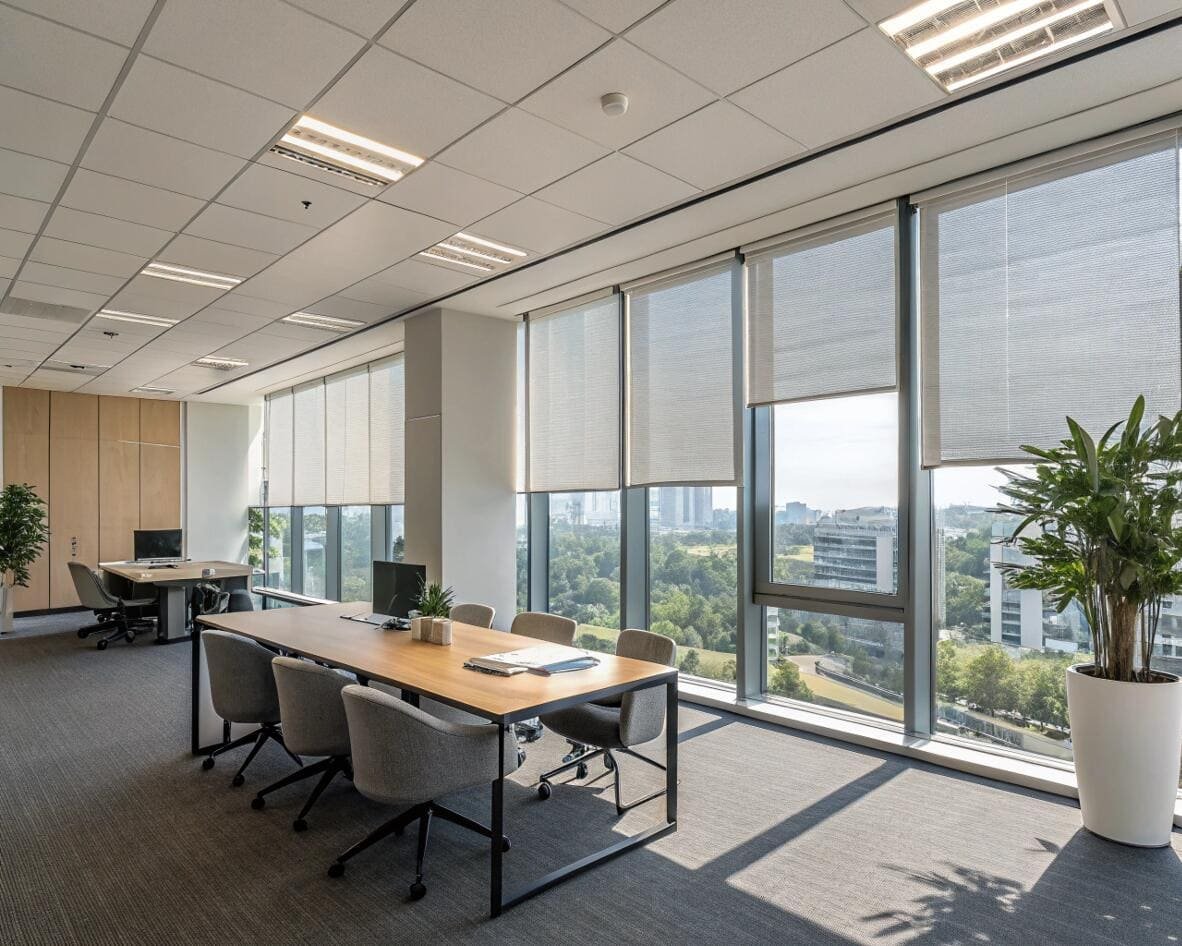
As a supplier for large-scale projects, I've seen the challenges contractors and facility managers face when dealing with dozens of windows. The dream of a sleek, automated building can quickly turn into a headache of mismatched blinds and frustrated users. The secret to success isn't in the blinds themselves, but in planning the control strategy from day one. In this guide, I'll break down the systems and techniques we use to deliver flawless, centralized control for projects of any size.
How to sync motorized blinds?
Are you dreading the thought of juggling dozens of remotes? Keeping blinds perfectly aligned across a building facade seems impossible with individual controls. There is a much simpler, more professional way to achieve this.
You sync motorized blinds by programming them into groups on a central controller. A multi-channel remote or a smart app allows you to create "zones" (e.g., "South Facade," "Conference Rooms") so that a single button press operates an entire group as one.
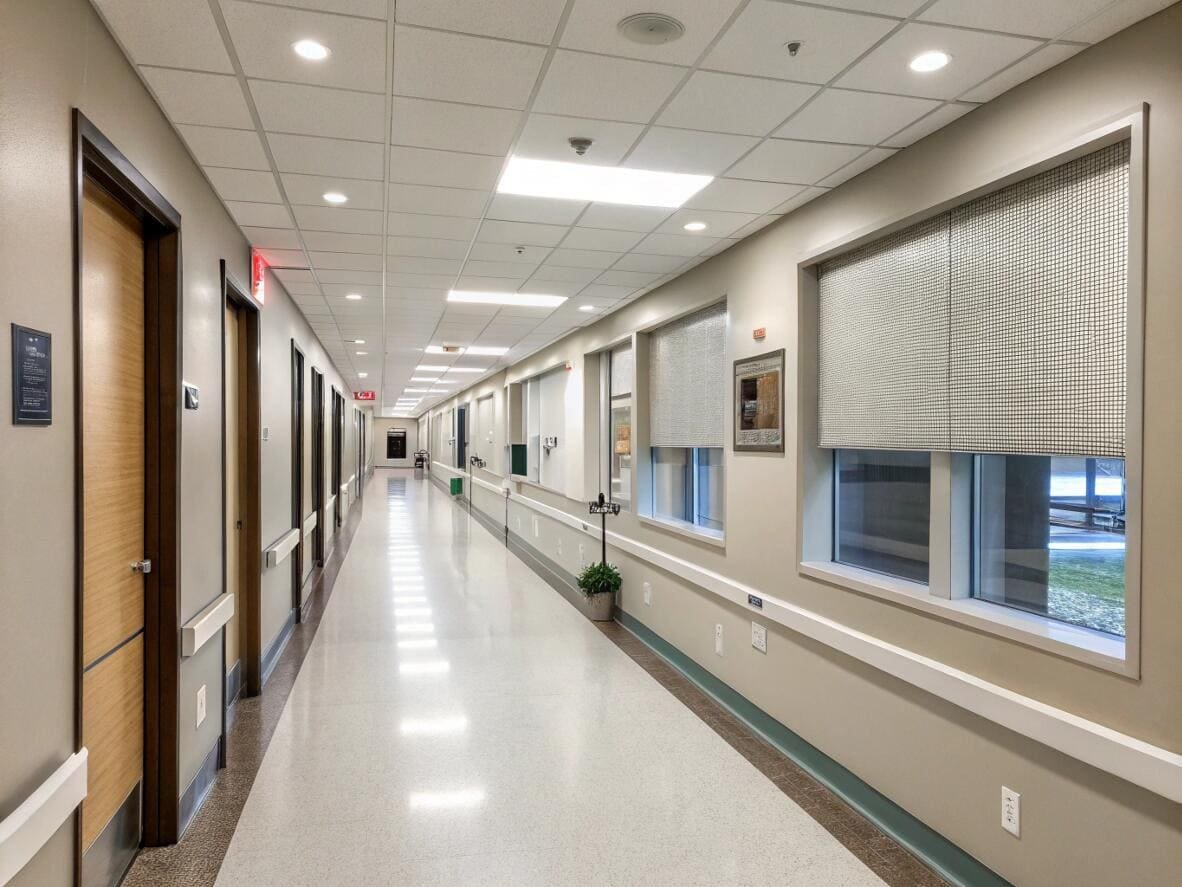
Synchronization is the foundation of managing multiple blinds. It moves the point of control from the individual window to a strategic group. The technology behind this is based on assigning multiple motor receivers to a single transmitter channel. Think of it like tuning multiple radios to the same station.
The primary methods to achieve this depend on the scale of your project:
| Communication Protocol | Best Use Case | How It Works | Strengths/Weaknesses |
|---|---|---|---|
| Radio Frequency (RF) | Small to medium-sized buildings, local control. | A simple, powerful radio signal is sent from the remote to the motors. Highly reliable and doesn't need a network. | Strength: Very reliable, cost-effective. Weakness: Limited range, one-way communication. |
| Zigbee / Z-Wave | Mid-sized buildings, smart home integration. | Creates a "mesh network" where each device can repeat the signal, extending the range. Requires a hub. | Strength: Excellent range, two-way communication. Weakness: Requires a compatible hub. |
| BACnet / Modbus Gateway | Large commercial buildings with a BMS. | A gateway device translates commands from the high-level Building Management System to the RF or wired signal the motors understand. | Strength: Total building integration. Weakness: Highest complexity and cost. |
For a project buyer like Emma, the key takeaway is that planning the grouping and control protocol early is essential. It determines the hardware you need and ensures the final system is both powerful and easy for the end-user to manage [3].
What central control systems work best for managing multiple blind zones?
Once you decide to sync your blinds, you face a confusing array of control options. Choosing the wrong system can lead to limited functionality or a costly, over-engineered solution.
The best system depends on project scale. Multi-channel remotes are best for simple zone control. Smart hubs or bridges are ideal for app-based management and scheduling. For total building automation, a gateway integrated with a Building Management System (BMS)[^2] is superior.
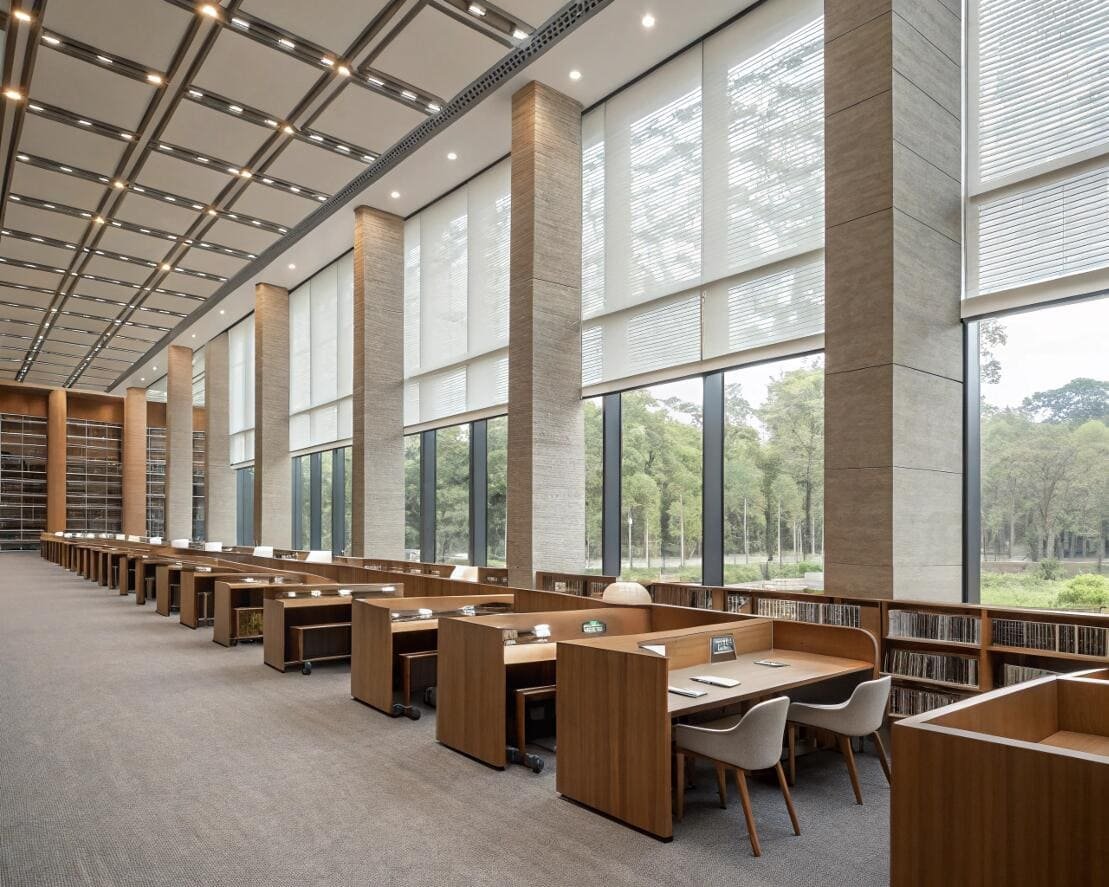
I guide my clients through a three-tier framework to select the right control system. This ensures the solution matches their budget, complexity, and operational needs.
-
Tier 1: Local Control (Multi-Channel Remotes): This is the simplest method. A remote with 5, 10, or 15 channels can be programmed to control different zones. Channel 1 could be "Office 1," Channel 2 could be "Office 2," and a master "All" channel can control everything at once. It's cost-effective[^3] and highly reliable.
-
Tier 2: App & Voice Control (Smart Hubs / Bridges): This is the most popular choice for modern smart homes and mid-sized commercial spaces. A physical hub connects to your internet router. It allows you to use a smartphone app to create advanced groups, set schedules (e.g., "close all blinds at sunset"), and integrate with voice assistants like Google Home or Alexa [1, 4].
-
Tier 3: Total Automation (Building Management System): For large, sophisticated buildings, this is the professional standard. The blind motors are connected via a gateway to the central BMS. This allows the blinds to be controlled in concert with the lighting and HVAC systems, often based on input from sun and temperature sensors, to maximize energy efficiency [3].
Understanding these tiers prevents over-specifying for a small project or under-specifying for a large one.
How do I program building automation systems to control hundreds of blinds simultaneously?
The idea of integrating hundreds of blinds into a complex Building Management System (BMS) can be intimidating. You might imagine hours of complex coding and debugging. The process is actually more about logical rules than programming from scratch.
Programming blinds in a BMS is done by creating logical routines using the system's graphical interface. You connect blind motor "gateways" to the BMS network (e.g., via BACnet[^4]) and then create "if-then" rules based on schedules, sensor inputs, or manual commands.
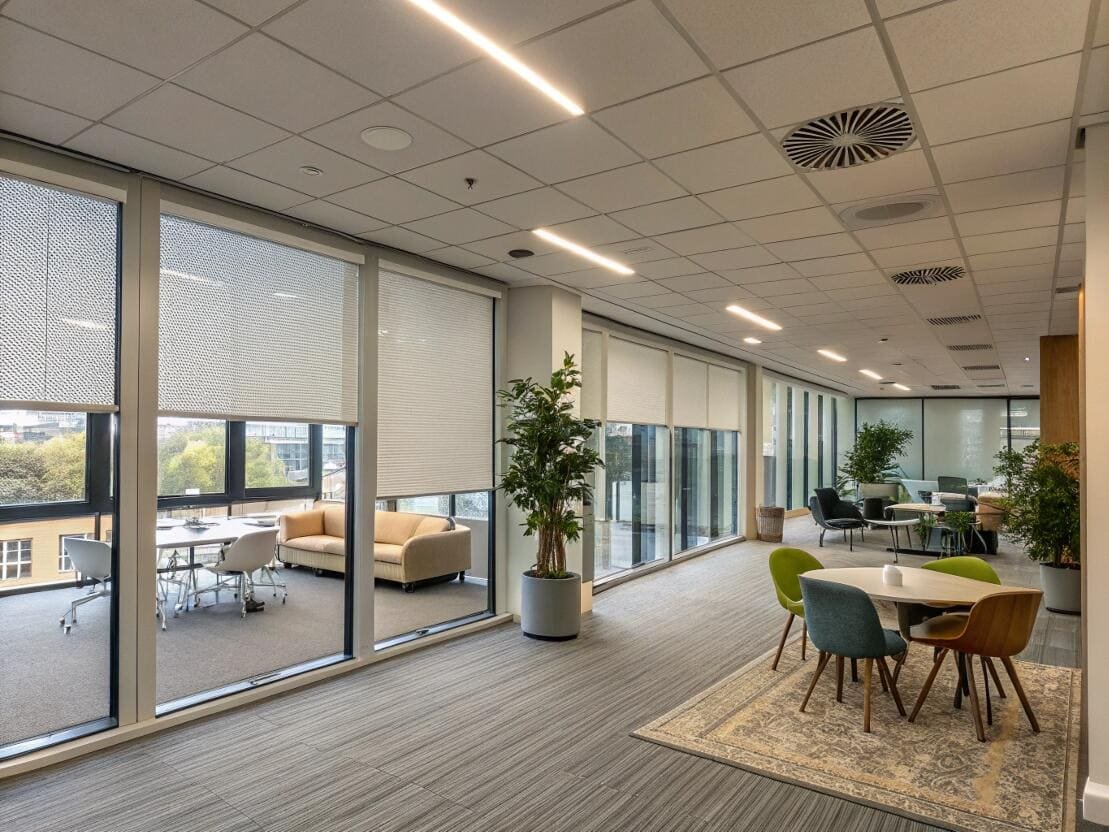
You don't need to be a software engineer to understand the logic. As a supplier, I often help bridge the gap between the blind installer and the BMS programmer. Here’s a typical automated routine broken down step-by-step:
- The Trigger: A sun sensor on the building's south-facing facade detects intense sunlight (e.g., > 60,000 lux).
- The Signal: The sensor sends this data point to the central BMS controller.
- The Logic: The BMS processes the data against a pre-set rule: "IF
South_Facade_Sensor> 60,000 lux ANDTimeis between 9 AM and 4 PM, THEN executeSouth_Facade_Glare_Controlscene." - The Command: The BMS sends a command over the BACnet network to the blind motor gateway device. The command might be as simple as "Zone 1, Position 50%".
- The Translation: The gateway acts as a translator. It receives the high-level BACnet command and converts it into the specific RF or wired signal that the individual VelaBlinds motors understand.
- The Action: All blinds in "Zone 1" (the south facade) simultaneously move to the 50% lowered position, cutting glare and reducing heat gain without plunging the space into darkness.
The key is the gateway device. It abstracts away the complexity, allowing the BMS to treat a group of a hundred blinds as a single, controllable point.
What are linked blinds and can you connect two blinds together?
Have you ever faced a wall of windows that is far too wide for a single blind? Installing multiple individual blinds can look cluttered with all the extra cords and headrails. Linked blinds are the elegant engineering solution to this exact problem.
Yes, you can connect two or more blinds together. A linked blind system allows multiple blinds to be coupled together and operated by a single motor. This creates a clean, seamless aesthetic for very wide window expanses and ensures perfectly synchronized movement.
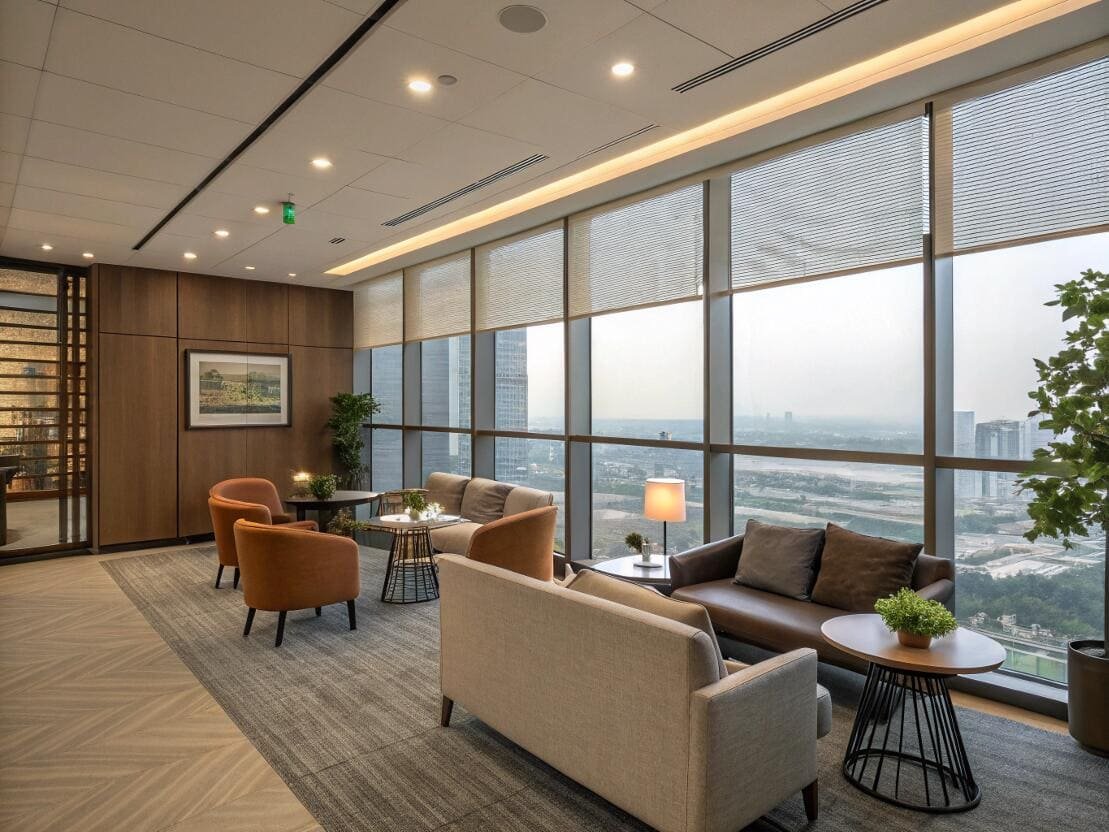
This is a brilliant solution I often specify for projects with large curtain walls or wide storefronts. It solves both a functional and an aesthetic problem. When you ask if you can connect two blinds, the answer is not just yes, but that there are smart ways to do it.
There are two primary methods for linking blinds:
-
Mechanical Linking: A single, powerful motor is installed on one blind. A solid connecting rod then runs through the roller tubes of the adjacent blinds, causing them to all turn in unison. This is a robust and cost-effective solution as it saves on the cost of extra motors and wiring.
-
Electronic "Linking" (Grouping): This isn't a physical link. Instead, you install a motor in each blind but program them all to the same channel on a remote or app. They operate as a synchronized group but are mechanically independent. This provides more flexibility for extremely wide installations where a single motor might not be powerful enough.
For most standard applications, a mechanical linked system is the preferred professional choice. It simplifies the system, reduces cost, and guarantees perfect alignment.
What are the advantages of linked blind systems versus individual control units?
You know you can link blinds, but is it worth it? The decision impacts more than just the initial price; it affects the building's long-term aesthetics, maintenance costs, and operational simplicity.
The main advantages are a superior aesthetic with fewer light gaps and no extra cords, lower total cost by reducing the number of motors and electrical outlets, and guaranteed perfect synchronization[^5] that maintains a uniform building facade.
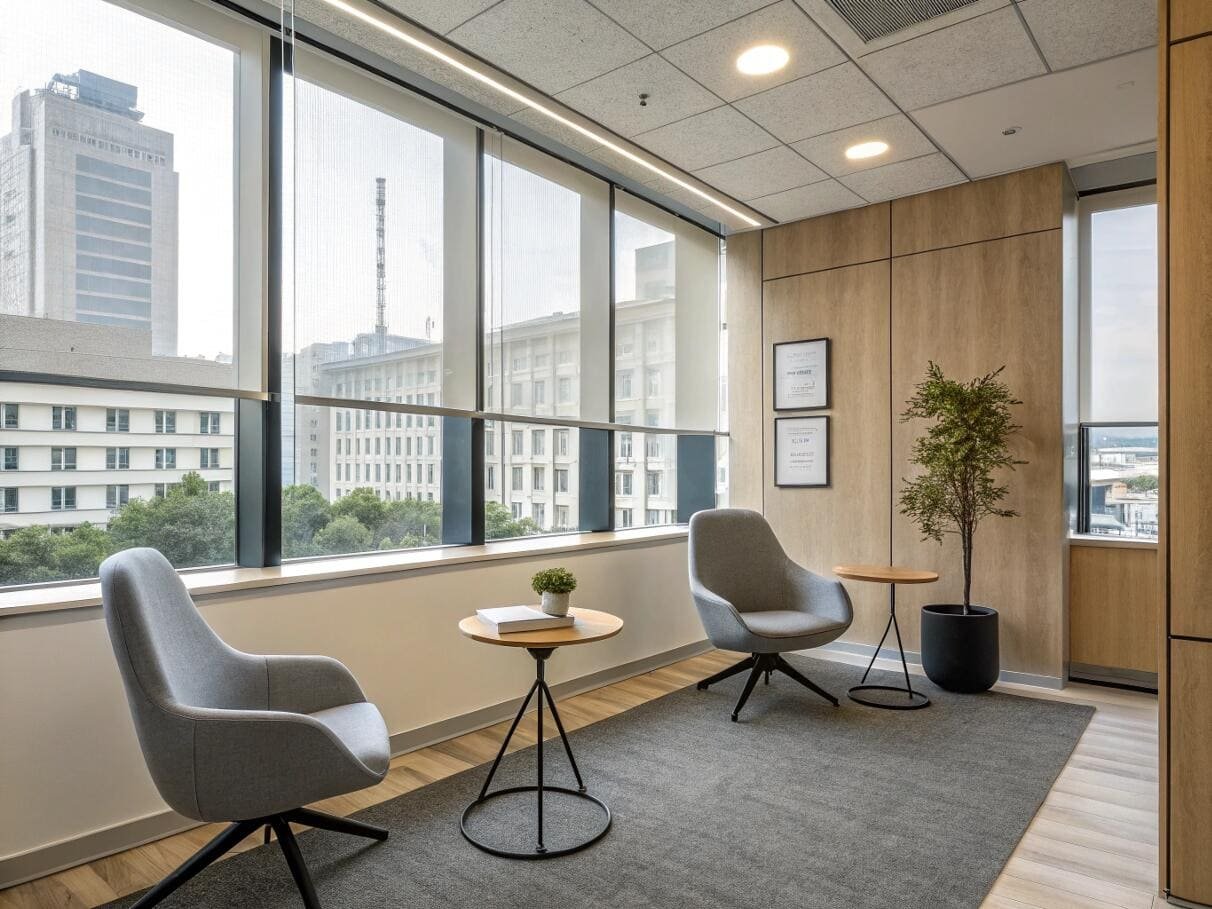
When I present the option of linked blinds to a project manager, I focus on three major benefits that have a real impact on the project's bottom line and final appearance.
| Advantage | Individual Control Units | Linked Blind System | The Benefit |
|---|---|---|---|
| Aesthetics | Multiple headrails, cords/wires, and larger light gaps between each blind. | A single, continuous look with much smaller light gaps. One motor controls all. | Cleaner, more professional appearance. Critical for high-end commercial and residential spaces. |
| Cost | One motor per blind. One electrical point per motor. Higher labor cost. | One motor for up to 3-4 blinds. One electrical point. Lower labor cost. | Significant cost savings across a large project. Reduces motor costs by 50-75% for a given bay. |
| Synchronization | Relies on perfect programming. Blinds can sometimes fall out of sync over time. | Mechanically coupled. It is physically impossible for them to move out of sync. | Guaranteed uniform movement. Maintains the architectural integrity of the building's facade. |
For any project aiming for a sleek, modern, and minimalist design, a linked blind system is not just an option; it's a necessity. It simplifies the design, reduces lifetime maintenance by having fewer moving parts, and delivers a visually superior result.
How to measure multiple windows for blinds?
Ordering mistakes are expensive. For a large project, one incorrect measurement repeated across ten windows can lead to thousands of dollars in waste and significant project delays. A systematic measurement process is non-negotiable.
Always measure each window individually using a steel tape measure, as no two windows are perfectly identical. Record width first, then height (W x H), and create a clear labeling system that ties each measurement back to a specific window on a floor plan.

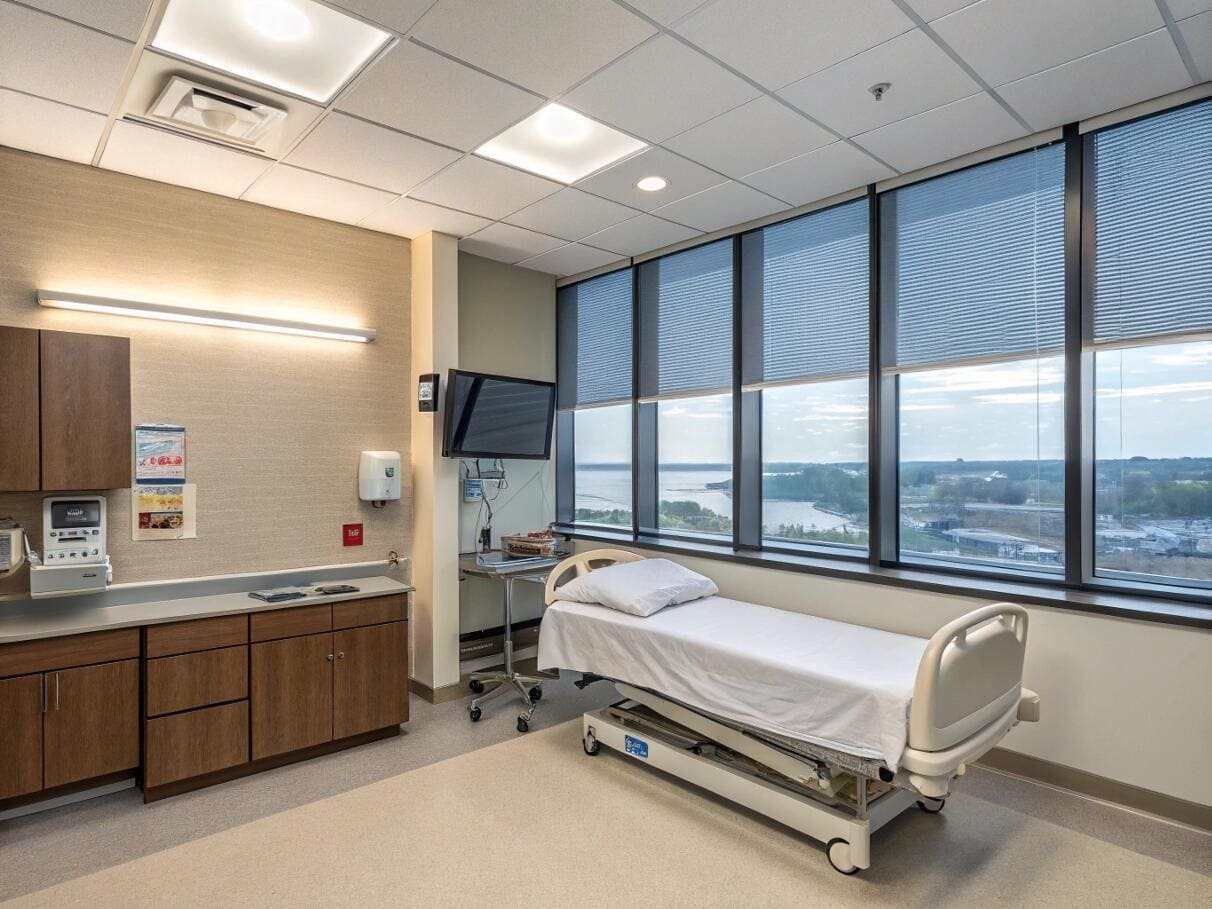
Even in a new commercial building, window openings can vary by several millimeters. Assuming they are all the same is the most common and costly mistake I see. Here is the professional, step-by-step process I insist my partners follow:
- Create a Master List: Start with a floor plan or a simple spreadsheet. Assign a unique number or code to every single window (e.g., "Level 2, Office 201, Window A").
- Measure the Width: For an inside mount, use a steel tape measure to check the width at the top, middle, and bottom of the window frame. Record the narrowest of the three measurements.
- Measure the Height: Measure the height on the left, in the middle, and on the right. Record the shortest of the three measurements. This ensures the blind will not buckle or scrape.
- Record Systematically: In your master list, enter the W x H dimensions next to the corresponding window code. For example: "L2-201-A: 1255mm x 2105mm".
- Check for Obstructions: Note any handles, vents, or trim that might interfere with the blind's operation. This is crucial for ensuring a perfect fit.
This disciplined approach eliminates guesswork and ensures that every single blind ordered will fit correctly the first time.
Conclusion
Successfully syncing multiple blinds across a large building is not magic; it's the result of smart, upfront planning. By choosing the right control system, implementing a logical grouping strategy, and ensuring precise measurement, you can deliver a sophisticated, efficient, and visually stunning automated shading solution.
Design Your Centralized Shading System
Ready to specify a seamless, centrally controlled blind system for your next project? Let's build a solution tailored to your needs. Contact me directly for project quotes, technical data, and system design support. Email us at info@velablinds.com.
Extended FAQ Section
People also ask
What's the maximum number of blinds I can control from one remote?
Standard multi-channel RF remotes typically offer between 5 and 16 channels. Each channel can be programmed to control a single blind or a group of blinds. However, the true power comes from a smart hub or bridge. When you use a hub, you are no longer limited by remote channels. A single hub can typically control 30 to 60+ individual blinds, and you can create a virtually unlimited number of groups and scenes within the smartphone app, giving you far greater flexibility than a physical remote alone.
Do all motorized blinds need to be the same brand to sync?
For seamless and reliable integration, it is highly recommended to use the same motor manufacturer and ecosystem (e.g., all Dooya motors or all Somfy motors) across the entire project. While it is technically possible for advanced integrators to make different brands work together using third-party systems like Control4 or custom programming, it often leads to compatibility issues, limited functionality, and troubleshooting headaches. Standardizing on one brand ensures all devices speak the same native language, guaranteeing perfect synchronization and simple setup.
What happens to hundreds of synced blinds if the power goes out?
This is a critical operational consideration. For hardwired AC-powered blinds, they will be inoperable and remain in their last position until power is restored. For battery-powered blinds, they will also be inoperable, but they will retain all their programming and limits. It's important to note that most modern blind systems do not have a manual override. Therefore, for critical areas requiring emergency egress or specific daylighting conditions, you should discuss power backup solutions (like a UPS for the control hub and gateways) during the project's electrical planning phase.
---
[^1]: Explore how Zigbee technology enhances the functionality of smart blinds.
[^2]: Discover how a BMS integrates with blinds for optimal building automation.
[^3]: Learn about budget-friendly options for implementing motorized blinds.
[^4]: Learn about BACnet's role in building automation and blind control.
[^5]: Explore the significance of synchronization in maintaining a uniform facade.Partner with VelaBlinds for Your Next Project
Smart window treatments shouldn't be complicated. After working with 500+ distributors and contractors worldwide, I've streamlined the process to get you quality products, competitive pricing, and reliable support - every time.
Why project professionals choose VelaBlinds:
- ✅ Fast, Accurate Quotes - Detailed specs and pricing within 24 hours
- ✅ Transparent Pricing - No hidden fees, volume discounts clearly outlined
- ✅ Quality Assurance - Direct partnerships with certified OEM manufacturers
- ✅ Project Support - Dedicated account manager from quote to delivery
Start your next project:
📧 Quick Quote: Send your requirements to info@velablinds.com
📱 Direct Contact: WhatsApp +86 137 2012 8317
🌐 Browse Solutions: https://velablinds.com/
📁 Product Resources: Access spec sheets, catalogs & project files
Jimmy Chen, Founder
"I built VelaBlinds to solve the real challenges I faced as a project buyer - long lead times, unclear specs, and unreliable suppliers. Let's discuss how we can power your projects with smarter blinds."
Serving distributors and contractors across North America, Europe, and Australia since 2018.

